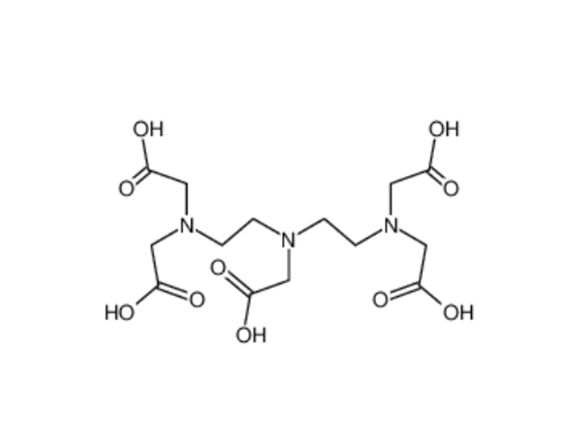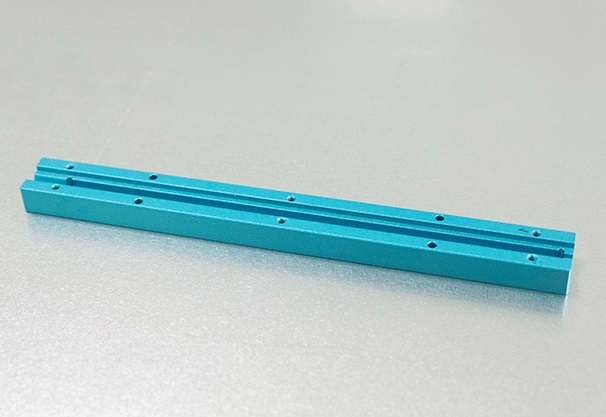Iohexol Injection
Iohexol oral is one of the different types of contrast media. Compared with a traditional ionic Contrast Media, Iohexol Injection has an excellent molecular structure and it can greatly improve user safety and significantly reduce adverse reactions. The iodinated contrast agent has excellent clinical feedback and good imaging results. In 1998, Iohexol Injection was launched as Beilu's 1st iodinated Contrast Media.
iohexol brand name: Iohexol Injection
Generic name: Iohexol Injection
Type: Injectable Contrast Media for CT/X-ray
Ingredients: Iohexol
Specification:
(1) 20 ml: 6 gI (2) 50 ml: 15 gI
(3) 75 ml: 22.5 gI (4) 100 ml: 30 gI
(5) 20 ml: 7 gI (6) 50 ml: 17.5 gI
(7) 100 ml: 35 gI
Administration: For injection or oral use of iodinated contrast
Adverse reactions: See the details from the package insert
Shelf life: 36 months
Indications of Iohexol Injection
The omnipaque iohexol is an X-ray contrast agent. It can be used for angiocardiography, arteriography, urography, enhanced CT examination inclduing cervical, thoracic and lumbar myelography, CT cisternography following intrathecal injection (i.e., an injection into the subarachnoid space); arthrography, endoscopic retrograde cholangiopancreatography (ERCP), herniography or fistulography, hysterosalpingography, sialography, percutaneous transhepatic cholangiography (PTC), sinography, gastroenterography, T-tube angiography, etc.
Precautions of Iohexol Injection
General precautions for the use of nonionic-monomer contrast agent:
1. Special attention should be paid to patients with allergies, asthma and adverse reactions to iodinated contrast agents. Prophylactic medications such as steroids and H1/H2 histamine receptor antagonists may be considered for these patients.
2. The risk of serious reactions related to this type of CT contrast agent is low. However, iodinated contrast agents can provoke anaphylactoid reactions or other allergic reactions. Therefore, first aid measures should be trained in advance, and necessary rescue drugs and devices should be prepared for possible serious reactions.
3. In view of the low accuracy of pre-test in predicting allergic reactions caused by nonionic contrast agents and the possibility that the pre-test itself may lead to serious allergic reactions, it is not recommended to use pretest to predict iodine allergic reactions.
4. Venous access should be kept smooth throughout the X-ray examination.
5. In the in-vitro tests, the iohexol side effects of nonionic contrast agents on the coagulation system is lighter than that of ionic contrast agents. During angiography, great care should be taken in the intravascular technical procedures, and the catheter should be irrigated with heparinized saline from time to time to reduce the thrombosis and embolism related to the technical procedures.
6. Patients, especially patients with multiple myeloma, diabetes, renal insufficiency, infants and young children, and the elderly, must be appropriately hydrated before and after the use of contrast agent. Electrolyte disturbance and hemodynamic disorders are common in infants (< 1 year old), particularly neonates. Special attention should be paid to patients with serious heart diseases and pulmonary arterial hypertension because they are prone to developing hemodynamic disorders and cardiac rhythm disturbances.
7. Patients with acute encephalopathy, brain tumour or history of epilepsy should be prevented from seizures, and special attention should be paid to them. The risks of seizures and neurologic reactions are significantly increased in patients with alcohol or drug abuse. Transient hearing loss or deafness occurs in a few patients after myelography, which is possibly caused by a decrease in CSF pressure after lumbar puncture.
8. In view of the high risks of acute renal failure after the use of contrast agent, special attention should be paid to patients with pre-existing renal impairment and diabetes and patients with atypical globulinemia (multiple myelomatoses and Waldenstrom macroglobulinemia).
9. Preventive actions include:
Identify patients with high-risk factors.
Ensure patients are appropriately hydrated and, if necessary, the infusion may be maintained intravenously prior to examination until the contrast agent is cleared from the kidneys.
Avoid any nephrotoxic agent, oral gallbladder contrast agent, surgery for arterial occlusion, renal angioplasty or other major surgeries that increase the renal burden until the contrast agent is cleared.
Repeat radiographic testing is delayed until renal function returned to the pre-examination level.
To prevent lactic acidosis, the level of serum creatinine must be determined before intravascular injection of iodinated contrast agent into diabetic patients taking metformin. For patients with abnormal serum creatinine/renal function, metformin must be discontinued and the examinations with contrast agent must be postponed until after 48 hours of discontinuation. Metformin should be reused only after renal function and serum creatinine level are constant. In some emergency cases of patients with abnormal or unknown renal function, the physician must assess both advantages and disadvantages of using contrast agent and take precautions, such as discontinuation of metformin, adequate hydration of patients, testing of renal functions, and careful observation of symptoms of lactic acidosis.
There is a potential risk of transient hepatic dysfunction. Special attention should be paid to patients with serious hepatic and renal insufficiency due to significantly longer time to clear contrast agent. Hemodialysis patients may receive the examinations with contrast agents. Immediate hemodialysis is not necessary after the injection of contrast agent because there is no evidence showing that hemodialysis can protect patients with renal impairment from contrast-induced nephropathy.
Iodinated contrast agents may exacerbate symptoms of myasthenia gravis. Patients with pheochromocytoma should be treated with α-blockers to prevent hypertensive crisis in interventional procedures. Special attention should also be paid to patients with hyperthyroidism. Patients with multinodular goitre may develop hyperthyroidism after using iodinated contrast agents. The possibility of transient hypothyroidism in preterm infants after using contrast agents should be clearly recognized.
Contrast media extravasation (CME) occasionally causes localized pain or oedema, which gradually subsides without sequelae. However, inflammation and even tissue necrosis may occasionally occur. Routine treatment is to elevate the affected limb and cold-compress at local sites. Surgical decompression is required in case of compartment syndrome.
10. Observation time:
Patients should be observed for at least 30 minutes after the use of the contrast agent because most serious adverse reactions occur during this period. However, there is still the possibility of a delayed response.
11. Intraspinal injection:
After myelography, patients should rest for 1 h with 20°-raised head and chest. Patients can carefully get out of bed and walk without bending over. If patients are still in bed, keep their head and chest raised for 6 hours. Patients with low seizure thresholds should be closely monitored during this period, and outpatients should not stay alone for the first 24 hours.
12. Effects on the ability to drive vehicles and operate machines:
Do not drive a vehicle or operate a machine within 24 hours after intraspinal injection.
13. As with all non-gastrointestinal drugs, this product should be visually inspected before use to check for particulate matter, discoloration and container damage.
This type of Iohexol contrast agent should be drawn into the barrel before use. Each vial is for single use only, and the unused portion should be discarded.
Beijing beilu pharmaceutical co ltdisa professional contrast media manufacturing companies, we provide ct contrast agent, omnipaque package insert,iohexol 300, contrast media products and etc. Want to know what is iohexol and iohexol uses? Please contact us.
在线联系供应商
Other supplier products
| Diethylenetriaminepentaacetic acid (DTPA) | CAS No.: 67-43-6 Molecular formula: C₁₄H₂₃N₃O₁₀ Molecular weight: 393.35 Quality standard: CP Characteristics: White powder Content ... | |
| Ferric Ammonium Citrate Effervescent Granules | Ferric Ammonium Citrate Effervescent Granules was launched in 2004. It is an oral magnetic resonance contrast agent/media approved by NMPA in the m... | |
| CT/X-Ray Contrast Media | The main component of CT/X-ray Contrast Media is iodine. The Iodinated Contrast Media is a colorless, transparent, slightly viscous liquid. At pres... | |
| Diethylenetriaminepentaacetic acid (DTPA) | DTPA Diethylenetriaminepentaacetic Acid(DTPA) CAS No.: 67-43-6 Molecular formula: C₁₄H₂₃N₃O₁₀ Molecular weight: 393.35 Quality standard... | |
| Calcobutrol | CAS No.: Molecular formula: C18H32CaN4O9 Molecular weight: 488.5461 Quality standard: CP Characteristics: White or off-white powder ... |
Same products
| Mold Components | 卖方: Packson Mold Co.,Ltd | We provide custom made plastic parts-Sliders, inserts, lifters, blocks, ejector pins, and other m... | |
| Custom Metal Machining Parts | 卖方: Packson Mold Co.,Ltd | Packson provides our customers a various CNC machining services to our customers, including milli... | |
| Clean Room Injection | 卖方: Packson Mold Co.,Ltd | Packson - Medial Injection Moulding Cleanroom Expert Packson specializes in delivering top-notch ... | |
| Medical Plastic Injection Molding | 卖方: Packson Mold Co.,Ltd | Packson - Medical Plastic Injection Molding Expert Packson sets itself apart from other medical i... | |
| CNC Metal Machining Parts | 卖方: Packson Mold Co.,Ltd | Packson is a contract manufacturer specializing in CNC Milling, CNC Turning, CNC Drilling service... |





















